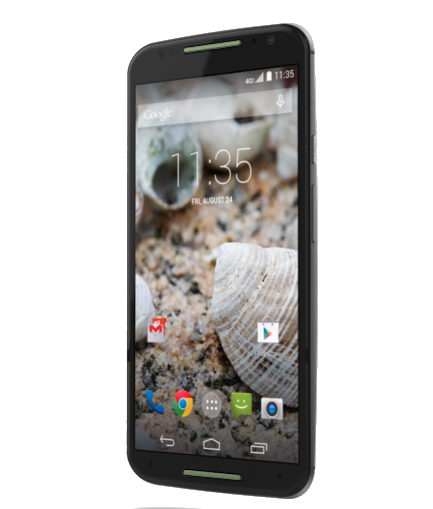Moto X (2014) review - Pure Android keeps it simple
An underrated Android handset without flashy gimmicks


Available for free from 26.50 per month, the Moto X punches above its weight with high-end specifications including a 2.5GHz quad-core Snapdragon processor, 2GB RAM and a 13-megapixel camera.
Below we take a look at the best and worst features:
Pure Android
The Moto X ships with Android KitKat 4.4.4 and Motorola doesn't overlay any unnecessary skins. The means the interface is as close to a pure experience you can get without having to buy a Nexus or Google Play Edition handset.
The lack of skin allows you to fully customise the interface with different launchers without compromising any of the functionality.

There's a Moto Assist app, which provides a quick tutorial showing how to control key features like voice activation and active display - more on this later.
Using unaltered Android also means that Motorola is able to push out software updates quickly because no major changes have to be made to the source code. Motorola is rolling out the Lollipop update to the handsets in the US at present.
Customisable exterior
If you buy directly from the Motorola, it's possible to customise the exterior using the Moto Maker tool.
This allows you to mix-and-match colours for the front and back panels, as well as choose the trim around the logo and speakers. You can also upgrade the rear cover to leather or wood.
Finally, you can engrave a name or message onto the back of the handset.

Display
The 5.2in Amoled display has a crisp full HD 1080p resolution (1920 x 1080). Brightness continuously adapts depending on the content being displayed on screen and you'll get a maximum brightness of around 350cd/m2.
The Moto X doesn't stray into phablet territory and with a weight of 144g it's comfortable to hold.
Downsides
Like any handset, the Moto X comes with trade-offs.
Battery life - With a small 2,300mAh power cell, the Moto X's biggest weakness is battery life. Power users will struggle to get through the day on a single charge. Because the battery pack is sealed you won't be able to swap it out on the move either.
No expandable storage - A lack of expandable storage means you'll want to opt for the 32GB version or you will find yourself running out of space quickly.
Active Display was developed by Motorola and takes the place of a notification light. This causes the screen to pulse intermittently to let you know there is a message. You can choose which apps will work with this feature and also set it so that none of the message is shown unless you unlock the device.
Gestures
One of the best features of the Moto X is the gesture-based control system.
When the device is locked, wave your hand over the screen to see the time and whether there are any notifications. It's also possible to silence alarms or phone calls by waving you hand over the screen.
A feature ported over from the previous Moto X is the shortcut to the camera. All you have to do is pick up the handset and twist your wrist twice to go straight into the camera app.
Overall, the Moto X is an excellent handset and if you're looking for a device with pure Android it's a toss up between this and the Nexus 5.
OS: Android KitKat 4.4.4 upgradeable to Lollipop 5.0 Display: 5.2in (1920 x 1080) AMOLED (424 ppi) Processor: 2.5GHz quad-core Snapdragon 801 CPU, with Adreno 330 GPU RAM: 2GB RAM Storage: 32GB internal with microSD support for up to 128GB Camera: 13-megapixel camera rear, 2-megapixel front Connectivity: 4G, Wi-Fi 802.11 b/g/n/ac, Bluetooth 4 NFC Weight: 144g
Get the ITPro daily newsletter
Sign up today and you will receive a free copy of our Future Focus 2025 report - the leading guidance on AI, cybersecurity and other IT challenges as per 700+ senior executives
-
 Cleo attack victim list grows as Hertz confirms customer data stolen – and security experts say it won't be the last
Cleo attack victim list grows as Hertz confirms customer data stolen – and security experts say it won't be the lastNews Hertz has confirmed it suffered a data breach as a result of the Cleo zero-day vulnerability in late 2024, with the car rental giant warning that customer data was stolen.
By Ross Kelly Published
-
 Women show more team spirit when it comes to cybersecurity, yet they're still missing out on opportunities
Women show more team spirit when it comes to cybersecurity, yet they're still missing out on opportunitiesNews While they're more likely to believe that responsibility should be shared, women are less likely to get the necessary training
By Emma Woollacott Published
-
 OpenAI wants developers using its new GPT-4.1 models – but how do they compare to Claude and Gemini on coding tasks?
OpenAI wants developers using its new GPT-4.1 models – but how do they compare to Claude and Gemini on coding tasks?News OpenAI says its GPT-4.1 model family offers sizable improvements for coding, but tests show competitors still outperform it in key areas.
By Ross Kelly Published